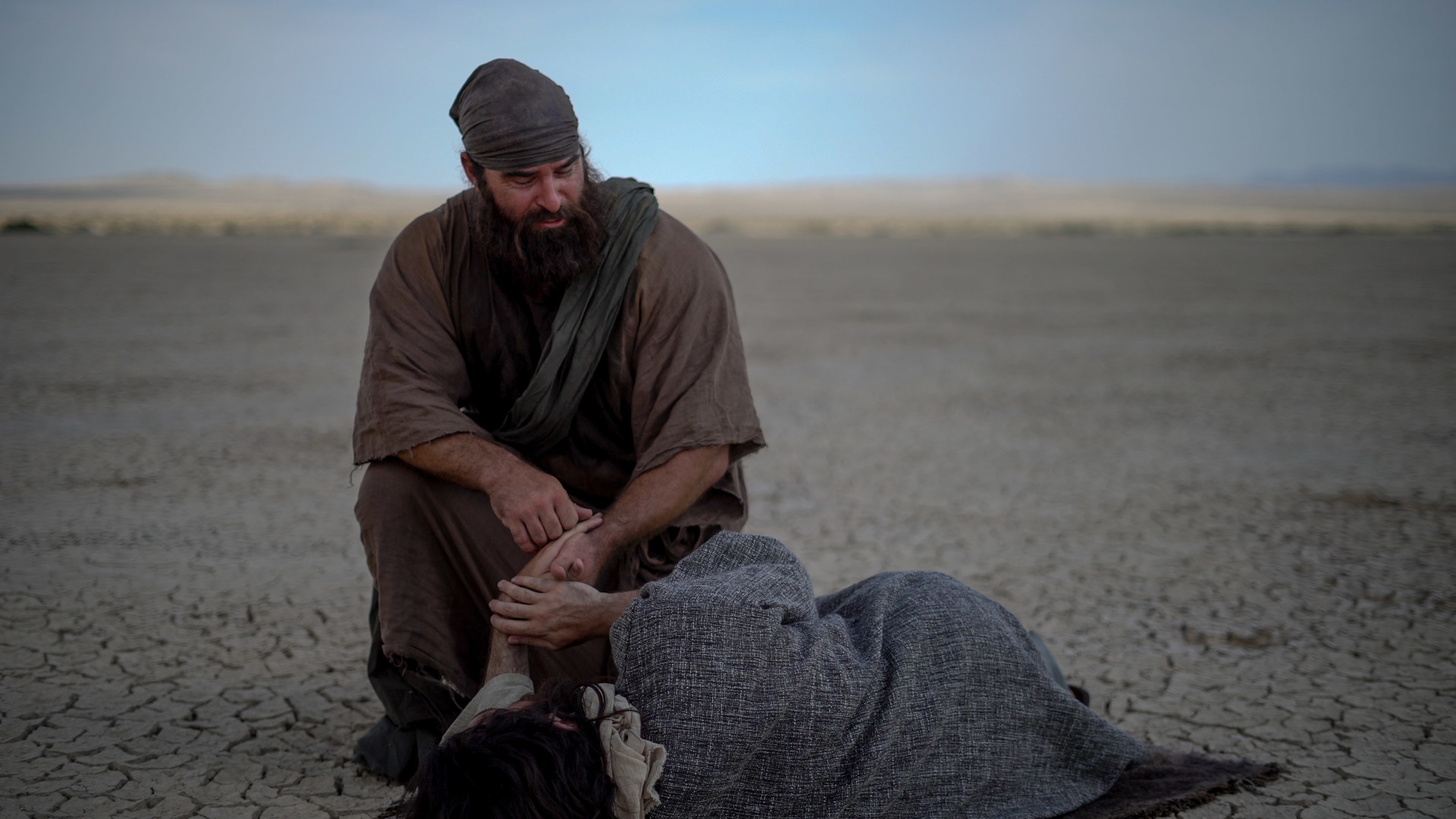Into the Wilderness, by Tober Corrigan
9 Apr

“Then Jesus was led up by the spirit into the wilderness to be tempted by the devil, and when he had fasted forty days and forty night, afterward he was hungry.” – Matthew 4:1-2
Using the above as its narrative basis, Douglas James Vail’s 40: The Temptation of Christ takes on the task of explaining what exactly happened during those 40 days and nights. Aside from the three temptations of the devil, everything else that could have happened in the wilderness has been left to the imagination. Screenwriter Reed Lackey takes it from there, dancing a fine line between respect for the source material (all of Jesus’ dialogue comes from scripture) and using speculation to guide the film’s deeper emotional truths.
40 begins with a voiceover narration from John The Baptist, who quickly catches up audiences on the events just leading up to Jesus’ time in the wilderness. Though heavy handed and a little awkward as a bracketing device for the film’s beginning and ending, the execution is more or less tastefully done.
Sweeping shots of hills and valleys intercut with the voiceover, establishing the epic tone that 40 uses throughout its running time. It’s a rather curious choice considering the intimate nature of Jesus’ struggle, but this juxtaposition ultimately works because of the stellar production value and impressive cinematography. The ability to shoot this on-location really did wonders for the project; we can feel the vastness and beauty of the natural world in nearly every shot. The style does at times risk being overproduced though, with certain montages feeling more like a GoPro commercial than a Biblical epic. But the frenetic visual style settles down as the plot develops.
Why are you here? What do you hope to get from here?
This is the central question of the film. Lucifer asks it outright (played with a surprising restraint by Sabastian Neudeck) while Mary and Joseph ask the same question in hushed tones, struggling to fully understand the nature of the son they are raising. Yes, Mary and Joseph not only appear in the film, but are prominent supporting characters. One of Lackey’s biggest deviations from the literal text happens via a series of flashbacks to Mary and Joseph raising a young Jesus. Rather than being used to “explain” the story of Jesus’ childhood, the flashbacks emotionally prepare us for the temptation sequences that are to come.
The anachronistic performances of Mary and Joseph (by Sophia Louisa and Cazzey Louis Cereghino respectively) are both the most strange and the most compelling of the film. Both performers bring a contemporary walk and talk to their roles, creating a refreshing dissonance with the film’s time period. After all, how many times have we seen stilted, lifeless depictions of Mary and Joseph in past adaptations? With 40, there’s no mistaking just how human and fallible these two are. Lackey doesn’t have to give them fatal flaws to do it either. Instead, we get scenes of conflict, the kind any married couple has surely had before. We get moments of doubt from Joseph, including disappointment that Jesus is not his biological son.
The answer to the film’s central question proves surprisingly complex. Of course, as the film’s ending voiceover explains, Jesus is the Son of God come to lose his life and to take it up again. But in the film’s best and most understated moments, it’s suggested that Jesus didn’t just come here to fulfill his most divine purpose, but to realize other, more human ones, too.
Early on in the film, before any of the temptations come his way, Jesus stops before a glorious visage of the endless expanses below and the blue sky above. Rather than despairing over the solitude or hunger, Jesus radiates true delight, seeming ecstatic or relieved by this little revelation.
Yet there’s no healing going on, no raising anyone from the dead, or even multiplying loaves and fish. He’s just watching a beautiful day unfold. The moment is simple, mundane even, but perhaps the little moments too can be divine. It is also in moments like this one that Sean Ardalan’s performance feels most natural and least self-conscious.
There are certainly aspects to 40 that I found wanting, or just less compelling. While the soundtrack was always rousing, some cues just did not match the emotion of the given scene. Perhaps more restraint with the music overall would have let the film breathe. For every scene that really worked (the first temptation, where Satan comes to Jesus disguised as Mary, comes first to mind), there was usually another scene that felt less than essential to the story. Perhaps my biggest criticism for 40 is that it never truly feels able to fill out its hour and a half running time.
Yet in an age where most films about Jesus either want to preach at you or make you question His divinity, 40 acts as a solid middle ground. If you are a believer who doesn’t need your biblical adaptations to always play by the book, then I recommend 40 for you.



No comments yet